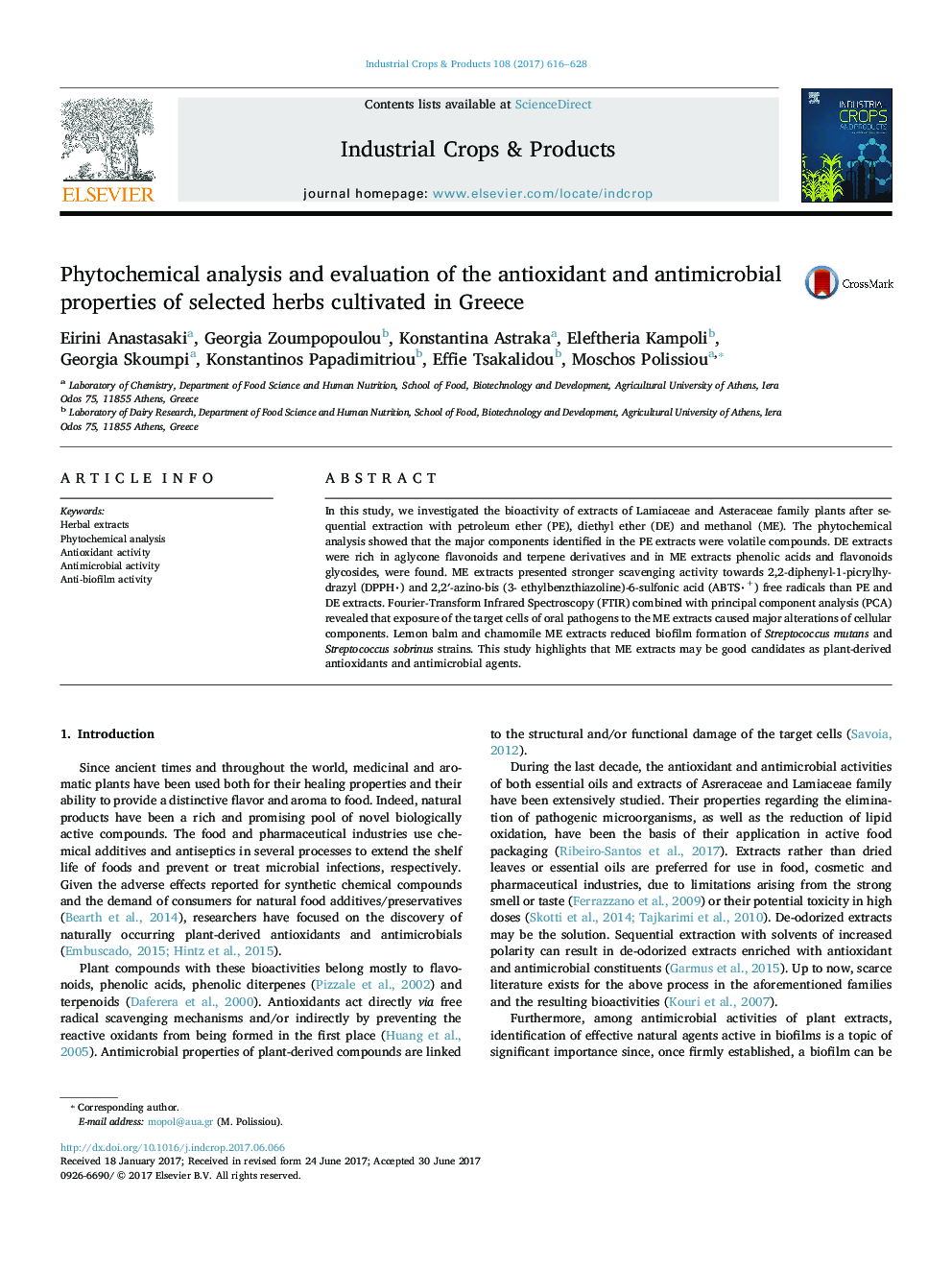| Article ID | Journal | Published Year | Pages | File Type |
|---|---|---|---|---|
| 5761838 | Industrial Crops and Products | 2017 | 13 Pages |
Abstract
In this study, we investigated the bioactivity of extracts of Lamiaceae and Asteraceae family plants after sequential extraction with petroleum ether (PE), diethyl ether (DE) and methanol (ME). The phytochemical analysis showed that the major components identified in the PE extracts were volatile compounds. DE extracts were rich in aglycone flavonoids and terpene derivatives and in ME extracts phenolic acids and flavonoids glycosides, were found. ME extracts presented stronger scavenging activity towards 2,2-diphenyl-1-picrylhydrazyl (DPPH) and 2,2â²-azino-bis (3- ethylbenzthiazoline)-6-sulfonic acid (ABTS+) free radicals than PE and DE extracts. Fourier-Transform Infrared Spectroscopy (FTIR) combined with principal component analysis (PCA) revealed that exposure of the target cells of oral pathogens to the ME extracts caused major alterations of cellular components. Lemon balm and chamomile ME extracts reduced biofilm formation of Streptococcus mutans and Streptococcus sobrinus strains. This study highlights that ME extracts may be good candidates as plant-derived antioxidants and antimicrobial agents.
Keywords
Related Topics
Life Sciences
Agricultural and Biological Sciences
Agronomy and Crop Science
Authors
Eirini Anastasaki, Georgia Zoumpopoulou, Konstantina Astraka, Eleftheria Kampoli, Georgia Skoumpi, Konstantinos Papadimitriou, Effie Tsakalidou, Moschos Polissiou,
